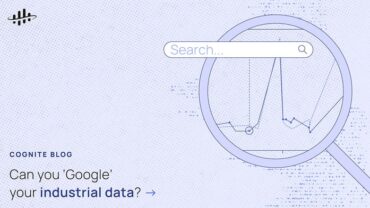
Data fabrics ensure organizational-wide and on-demand access to data sets needed for efficient operations and digital transformation.
The ability to visualize and process data is the most important enterprise skill, and business leaders don’t want to miss it. Anything without the backing of data holds no acceptance in the digital world. Just like most technological things, data, too, is bound to evolve. Amidst the increasing use for Web 3.0 technologies such as IoT, business leaders have a key responsibility – to elevate their data management practices into future-ready frameworks. Enter data fabrics.
![Featured Resource: Embracing a Transformative Approach to Business-led Integration [Read Now]](https://no-cache.hubspot.com/cta/default/8019034/9919b744-7cf0-4636-8c23-71fd85f681a4.png)
Data fabrics, as we all know, is a rapidly growing market, and enterprise decision-makers across the board are asking for it. What’s interesting is the rising adaptability of the fabric in organizing data regardless of the sector, historical landscape, or the underlying technology.
As a result, the CAGR of 23.8% growth till 2026 doesn’t look like a tough road. So everyone involved in the process of building data teams, all C-level executives (including Information officers, Data officers, etc.), data scientists, analysts, AI developers, and the stakeholders should align the organization’s expectation from the practice called data fabrics.
See also: Center for Automated Integration
The purpose of data fabric
Data fabrics are more than just a data management protocol. Unlike traditional practices, these extract the best from automation, thereby ensuring flexibility, accuracy, and sustainability. So, it is not incorrect to say that fabrics are an AI-enabled management architecture that continuously feeds analytical insights to your metadata and ultimately contributes to smarter business decision-making.
It can predict the actual usability of data sets in multiple new patterns, for new metadata types, new forms of orchestration, and drive smart reporting for – the-moment analytical consumption.
Therefore, D&A leaders can utilize the opportunity to replace human effort (and error) by eliminating primitive data management & maintenance technologies. Human resources, at the same time, can be leveraged for more creative and critical strategic building.
Regardless of the incoming source, the fabric ensures organizational-wide and on-demand access to requested data sets.
See also: Why a Data Fabric Could Future-Proof Clinical Trials
What should business leaders do?
Now, it should also be noted that the fabric architecture is least affected by the changing data environments, preferred usage policies, management processes, and others. As a result, it proficiently automates data discovery and governance initiatives while preparing enterprise-ready analytics.
Now, the enterprise fate sways on the quality of data processes and behind the scene decision takers. It has a direct impact on the stakeholders and has to achieve targeted outcomes. Therefore, decision-makers should ensure that the practice involves everyone on the board. Make it a collaborative activity than just a few executives taking the call. At the same time, it should be:-
1) A collaboration of machine AI and human consciousness
Against popular belief, AI is not killing human jobs. It’s rather putting them for more critical (and productive) roles. Humans excel in a contextual analysis of a decision-making process, while machines are best suited for more rational problem-solving roles.
2) Adaptable to change
The decision-making should acknowledge the versatility of data. Subsequently, the finalized decision should fit in ad-hoc scenarios and thus complement the enterprise’s scalability goals in the future. If required, break the decision-making process into multiple smaller decisions. The process should be context-sensitive at every level of multiple components.
3) Modern challenges require modern solutions
Data management is not new. Automation in data management is not a new practice anymore. It’s been around for more than a decade ever since the industry woke up to Big Data analytics. As we inch closer to the era of web 3.0, the rate of data production will increase exponentially. And that’s exactly why we need a super-intelligent management process to handle this mad rush with finesse. Needless to say, business leaders have an important role to adorn here. They must detach their organizational data management from primitive practices and adorn the latest technology. While we are at it, it is important to acknowledge the success of micro-databases.
K2View Data Fabric, for example, uses micro-databases to manage data through digital entities. Capturing fragmented data sources from multiple systems in silos organizes them into an exclusive data schema wherein every schema represents a specific type of business entity. Each business entity (digital entity) is stored in a unique micro-database. For organizations, it is an efficient way to unify all information about a specific business entity while making it accessible for everyone. For business leaders, it is an opportunity to revamp their data practice into a more integrated ecosystem.
Besides updating the data in the source systems, the fabric is scalable and supports millions of micro-databases parallel. As a result, there is distributed, automated, and high-performing management architecture in the bottom layer.
The ball is in your court
It’s an open marketplace. Everybody has access to the latest technologies, and the sole differentiator is the ability to foresee change and act in advance. With respect to fabrics, data science leaders have a greater task in hand – to visualize, plan and prepare their organizations for a volatile digital landscape.
![Featured Resource: Embracing a Transformative Approach to Business-led Integration [Read Now]](https://no-cache.hubspot.com/cta/default/8019034/9919b744-7cf0-4636-8c23-71fd85f681a4.png)







